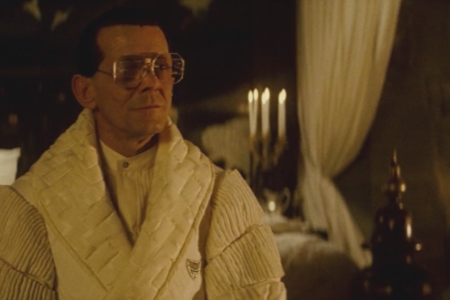
Tyrell Corp
Biotechnology, Megacorporation, Robotics, Slavery
Year 2019
The Tyrell Corporation is a high-tech firm primarily involved in the design and production of genetically engineered biological androids known as Replicants, which are sold as slave laborers and soldiers in the Off-world colonies. The company is based in Los Angeles, and named after its founder and CEO, Dr. Eldon Tyrell.
Overview: Tyrell Corp Identity
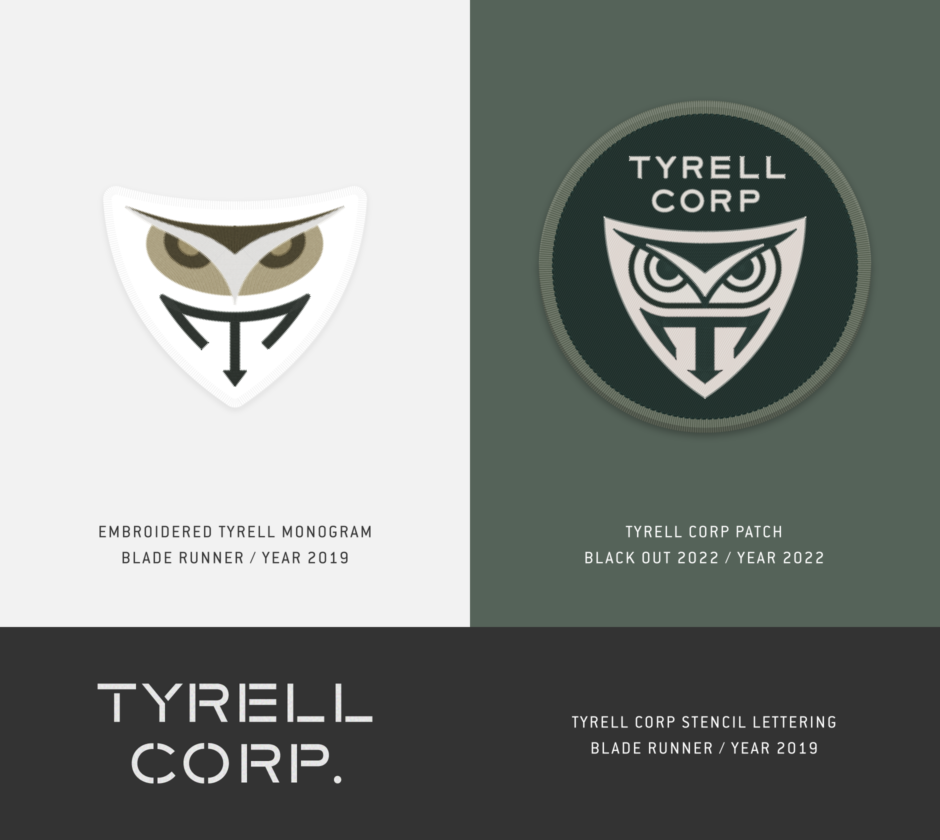
*Identity as it appeared in Blade Runner films.
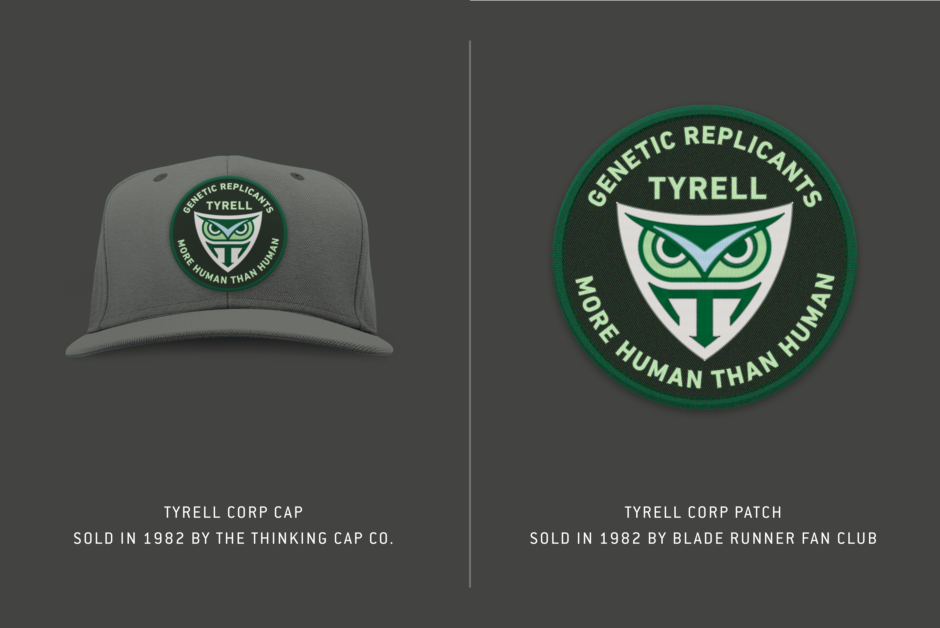
*Identity as it appeared on official Blade Runner merchandise.
Intro: The Tyrell Corporation
Located in the midst of a vast industrial landscape, the Tyrell Corporation’s headquarters dominates the Los Angeles skyline with its two immense pyramid structures (Figure 1.1).
The company was named after its founder and CEO, Dr. Eldon Tyrell (Figure 1.2), whose genius in the areas of biotechnology had advanced robot evolution into what was known as the NEXUS phase — creating a genetically engineered biological android known as the Replicant.
As of 2019, the company’s most advanced model was the NEXUS-6. Living up to the company’s motto, “More Human Than Human,” these Replicants were virtually indistinguishable from a human, and equal in intellect to their creators, while possessing superior strength, speed, agility and resilience. To control them, in an extreme act of planned obsolescence, they were also created with a limited lifespan of four years.
All Replicants were bound for the Off-world colonies, where they were used as slave labor and soldiers. They were banned on planet Earth, outside of Tyrell facilities, after exhibiting a dangerous tendency to rebellion.
In 2019, Dr. Eldon Tyrell himself was killed by a NEXUS-6 Replicant.
After Dr. Tyrell’s death, the Tyrell Corporation continued to operate. While NEXUS-6 models expired in inventory, the NEXUS-8 was pushed to Earth and Off-world markets with open lifespans, prompting a massive backlash from human supremacy movements. Then came The Blackout event of 2022, believed to have been caused by Replicants, which lead to their total prohibition. This sealed the fate of Tyrell Corporation, bankrupting the company.
What remained of the Tyrell Corporation’s technology and holdings would be acquired by the Wallace Corporation in 2028.

Figure 1.1 Approaching the Tyrell Corp Headquarters.
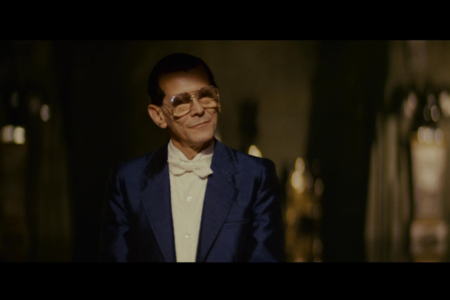
Figure 1.2 Dr. Eldon Tyrell, founder and CEO of Tyrell Corp.
Analysis: The Owl as a Symbol
The Tyrell Corp logo is only seen briefly in the first Blade Runner film, after we’ve already become acquainted with the animal it uses as a symbol — the owl, which makes appearances whenever a meeting with Dr. Eldon Tyrell takes place (Figure 2.1).
In Philip K Dick’s novel, Do Androids Dream of Electric Sheep?, it is explained that the owl was the first animal to go extinct, due to the radioactive dust left behind by World War Terminus. In Blade Runner, we can assume the same given Rachel’s response to Deckard’s question as to whether or not it is artificial — to say “of course it is” would imply that there are no real owls left.
It’s interesting what this says about Tyrell, that he would possess an owl, even an artificial one. As Blade Runner producer Michael Deeley has noted, the owl was originally filmed as being real, but in post production they changed this to add “credibility to the idea that Tyrell could manufacture perfect imitations of living things.” And this isn’t just an expensive and exotic pet of his, but a creature with enough symbolic meaning for him to merit it being used in the logo for himself and his corporation — which we can glimpse in a few brief instances, in his scene with Roy Batty, where you can find the logo on the robe Tyrell is wearing. It appears there as a small embroidered patch over the left breast (Figure 2.2), which carries the monogram owl mark.
So, let’s dig into this a bit. The owl carries multiple symbolic meanings that are worth consideration, as they might pertain to the Tyrell Corp logo.
In the western world, the owl is seen as a symbol of knowledge and wisdom, mostly due to its association with Athena, the Greek goddess of wisdom (Figure 2.3). With its large eyes and ability to see at night, it is also seen as possessing supernatural vision, and a “wisdom that penetrates the dark.” This extends to modern logos, where owls represent businesses and organizations related to knowledge, like publishers and schools. You’ll also note that in almost all instances, be it in representations by ancient cultures or modern logos, the owl is depicted with its face turned to the viewer. Such is the importance of the owl’s eyes, to its symbolic meaning. With Tyrell being renowned as a genius, and designing the minds of his Replicants, it’s little surprise that he would be drawn to the owl for these reasons. Adding to that the fact that owls were exterminated by humans in the context of Blade Runner, in an act that definitely lacked wisdom, Tyrell may envision himself as someone bringing knowledge and wisdom back into a dark world. Or keeping it alive.
The nocturnal owl is also a symbolic opposite of the eagle. While the eagle is typically solar and an attribute of male sky gods, the owl is lunar and associated with female deities. It has a connection with the night and darkness, the feminine and fertility, and with the moon’s cycles of renewal. And Tyrell could find meaning in that, as his corporation gives birth to artificial humans, to serve humankind as they seek a renewed existence in the Off-world colonies, out in dark reaches of space.
Looking at it from a different angle, in a number of cultures the owl is a bird of the dead, whose cries presage evil tidings and imminent death (Figure 2.5). I don’t really see this fitting into the corporation’s identity, as an intended meaning within the imagined world of Blade Runner, but it’s interesting to consider from the perspective of the film’s viewing audience, for how it might support the film’s narrative. Tyrell Corp, being god-like, consigns its creations to a prescribed death after four years. While the film’s Replicants are fighting against death, trying to meet their maker, with the hope that he can grant them more life. Some of those cultures that viewed the owl as a symbol of death, namely the ancient Egyptians and the Aztecs, also shared Tyrell’s enthusiasm for pyramid architecture. And of course, Tyrell meets his own end in the film, while wearing the owl symbol.
Like many things in this film, I think it is open to interpretation what the owl could mean for Tyrell and his company’s identity. It would be interesting to hear from the logo’s designer, but unfortunately I haven’t been able to determine credit for the mark. The best guess is it was created by someone in the film’s costume department.
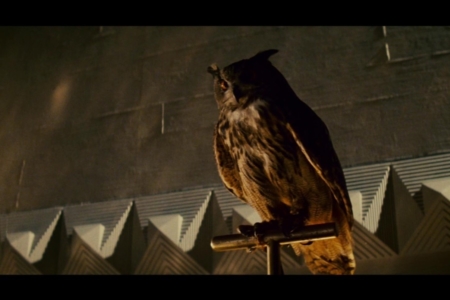
Figure 2.1 “Do you like our owl?” It’s not just an exotic pet kept by Tyrell, but an animal with symbolic meaning for his corporation.
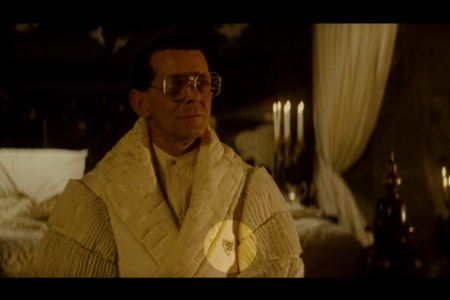
Figure 2.2 When Tyrell is confronted by Roy Batty, the robe he wears carries a monogram owl mark — the only instance of the what is considered the Tyrell logo, that appeared in the film.
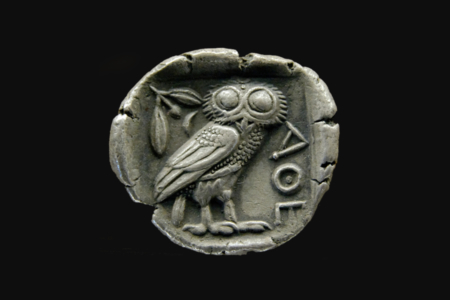
Figure 2.3 Coin at the Museum of Fine Arts of Lyon depicting the owl of Athena (circa 480–420 BC). Source: Wikimedia Commons

Figure 2.4 Owl logos tend to represent entities involved in knowledge or education, like publishers or schools (top row). It is also common to see them used for scientific or technical entities involved in vision or optics (bottom row).
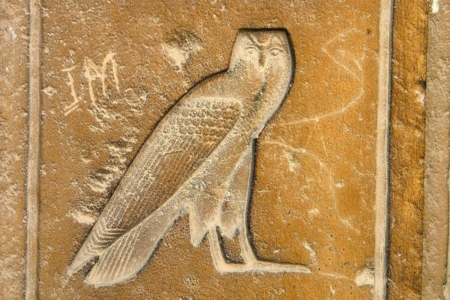
Figure 2.5 A number of cultures view the owl as a symbol of death. The ancient Egyptians saw it as such, and also employed it as a hieroglyph. Source: Egyptian Geographic
Analysis: The Design of the Tyrell Corp Identity
In Blade Runner, the Tyrell visual identity manifests itself in two instances. In the first, we find it stenciled onto the backs of chairs in “The Interrogation Room” at the Tyrell Corp headquarters, where Holden gives Leon the V-K test (Figure 3.1). I asked Production Illustrator Tom Southwell about this, and he said: “The stencil on the chair was a last minute decision handled by the BR sign shop, headed by a guy named Jay.” From what I can tell, the lettering looks to be some version of an engraver’s gothic typeface, with modification and the necessary stencil cuts (Figure 3.2), though I’m not sure what specific one we see used.
The second instance of the identity is the owl mark covered in the previous section. We are not offered a very close look at the logo as it appeared on Tyrell’s robe, in the brief moments it is visible. A promotional photo of Dr. Eldon Tyrell (Figure 3.3) is the best we probably get, and I don’t have access to the original photograph — just a very low-res instance that has been shared in a few places online without credit. In addition to all this, the mark itself is embroidered, which could mean details from the original rendering were lost in translation.
Official merchandise (Figure 3.4) gives us a better look, but unfortunately, again we are looking at embroidered instances. In the short film Black Out 2022, things are a little clearer when we catch a glimpse of it as a patch on the uniform of a renegade Tyrell Corp employee (Figure 3.5). That instance looks to be based on the merch logo, or fan approximations of what appeared on the merch.
In any case, what we find the logo comprised of is the head of an owl, facing the viewer and perched atop a stylized uppercase letter T for Tyrell. The T features downward thrusting serifs, with an arrow-like point at the base, that gives it the appearance of a trident.
I will note that outside of the films and merch, I did find a drawing of the logo that was likely based on what could be seen in production photos of Tyrell wearing the robe. It was published in a 1986 portfolio book by designer Jay Vigon (Figure 3.6), whose studio did a lot of work in the film and music industries. It looks like he was one of the designers brought in to generate ideas for Blade Runner’s title treatment. In that drawing, the T is more delicate — looking pretty true to what appeared in Blade Runner, in contrast to the heavier T that appears on the official merch.
As for the logo’s colors, well, that is an element that is just as hard to nail down as the form. As we see it on the robe Tyrell wears in the film, it looks to be some combination of gold, brown and black, on a white patch (Figures 4.1 and 4.2). I decided to search for better images of the actual prop, but that only made matters more confusing.
My search led to Flickr, where I found a photo of the robe in a display case at Cinerama. I reached out to its photographer, Kurt Schlosser, and his response was, “Indeed, that is an original costume. Paul Allen, the late Microsoft co-founder, was the owner of the Cinerama and a huge sci-fi nerd. He had other costumes and props from the film on display in the lobby and at his museum in Seattle, MoPOP.”
But when I zoomed in on the monogram patch, it was in green, silver, gold and black, on a gold patch (Figure 4.3). The T was heavier. It looks a lot like what was featured on the merch, where they used a green owl with silver/bluish brow over a heavier T (Figure 4.4). So maybe there were multiple robe costumes with slightly different Tyrell marks on them? And the merch was based on this robe’s green owl, that didn’t get used on-screen, that ended up in Paul Allen’s collection? I don’t think the film’s heavy color grading would have created such a shift, for it to have been that same robe we see Tyrell wearing in the film. If any readers can clear this up for me, I’d be interested in hearing from you.
As a final note in the design analysis, I’ll say that the logo is stylistically, not very high-tech or futuristic, nor is it the sort of thing you’d see giant corporations using in the present-day (remember, Blade Runner was set in 2019). The mark is aristocratic rather than corporate, having more in common with the monograms of royalty, or family crests where animals appeared as heraldic charges on shields. This actually aligns well with Tyrell’s “monolithic persona,” detailed in the book Future Noir as something that the filmmakers extended to his wardrobe, accessories and the furnishings of his home and office. As Production Designer Lawrence G Paull describes it, the aim was to portray Tyrell as “omnipotent, a member of a rich, powerful class who had so cloistered himself away from the masses that he literally ran his empire from a tower.” Tyrell Corp may have been one of the most powerful corporate monopolies in the future, but Eldon Tyrell was at the center of it all, and a god-like figure. In that sense, an abstract corporate mark just wouldn’t do.
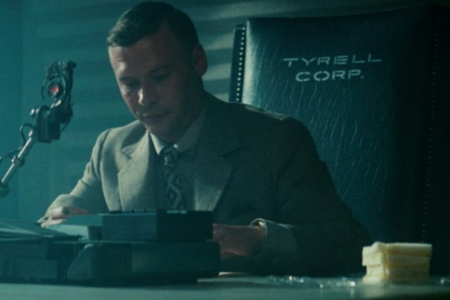
Figure 3.1 In the scene where Holden interrogates Leon, we see “TYRELL CORP.” stenciled on chair backs.
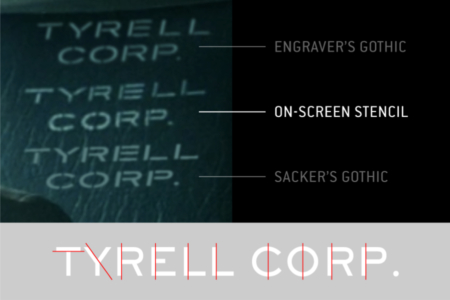
Figure 3.2 Engraver’s gothic typefaces produce a close match for the “TYRELL CORP.” stencil lettering on chairs, but it is unclear what exactly was used by the sign department.
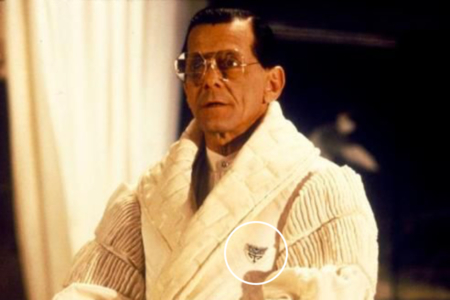
Figure 3.3 A promotional photo of Dr. Eldon Tyrell, wearing a robe bearing the Tyrell monogram. Source: Unknown
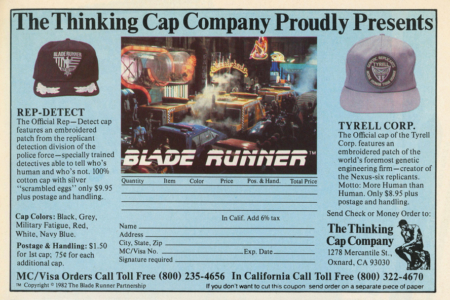
Figure 3.4 Officially licensed Blade Runner hats featuring the Tyrell Corp logo were available for mail order in magazines, in 1982. Source: Blade Runner Souvenir Magazine
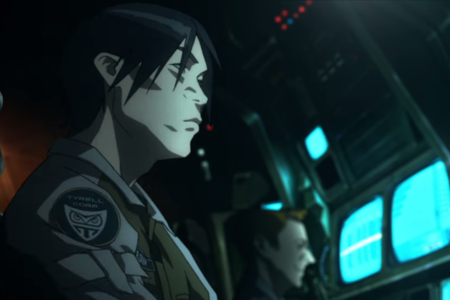
Figure 3.5 The Tyrell logo shows up in the Blade Runner animated short, Black Out 2022, on an employee’s patch.
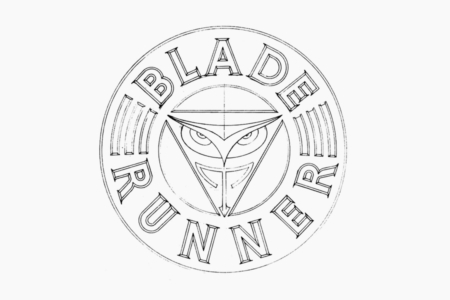
Figure 3.6 Jay Vigon’s Blade Runner title treatment, that featured the Tyrell logo in the center. Source: Marks: New Directions in Logo Design
Brown Owl
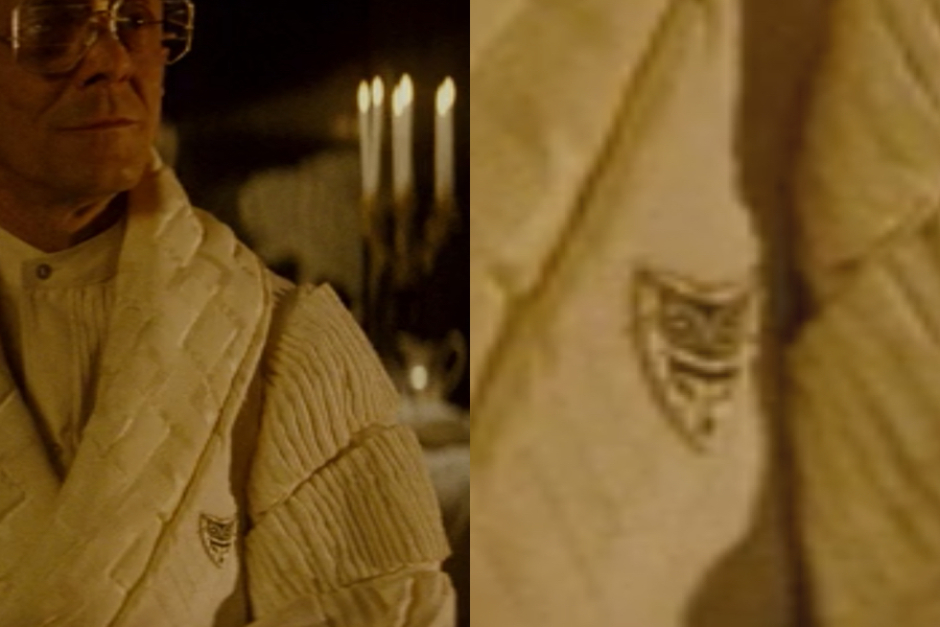
Figure 4.1 Zooming in on the mark, as it appeared on Tyrell’s robe during the scene with Roy Batty.
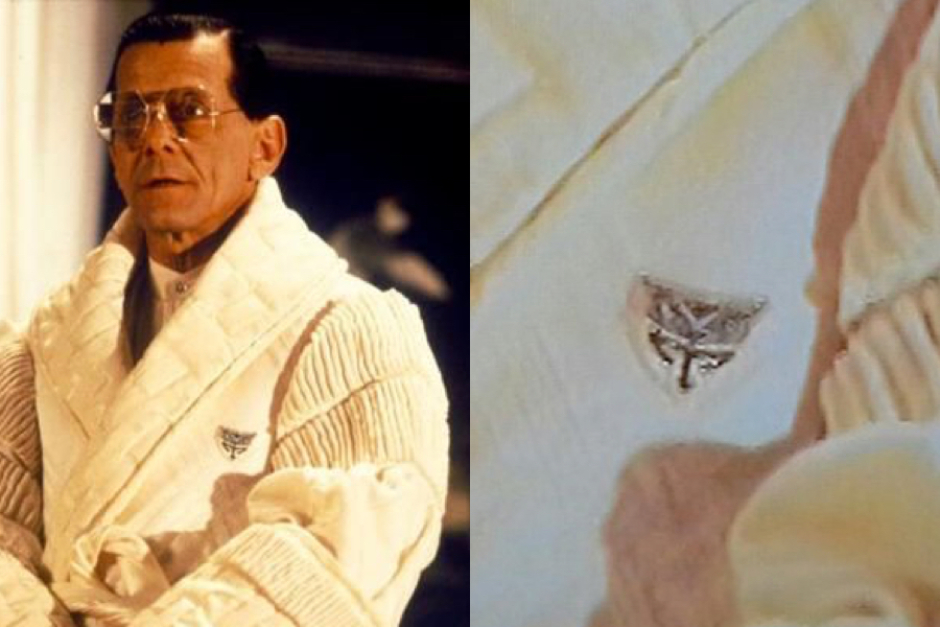
Figure 4.2 Zooming in on the mark, as it appeared in a promotional photo of Tyrell wearing the robe.
Green Owl
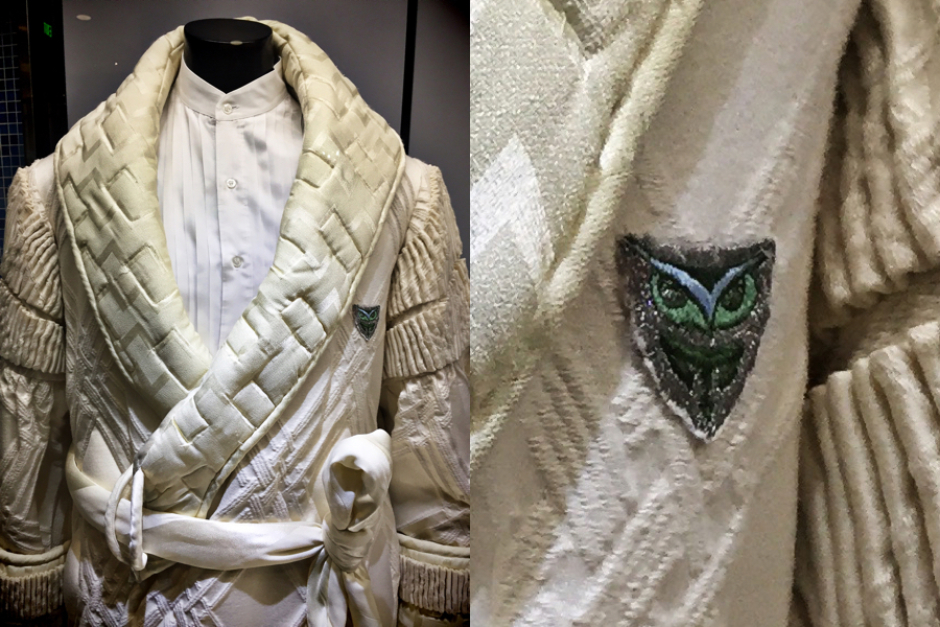
Figure 4.3 Zooming in on the mark, as it appeared on a robe purported to be an original prop from the film, that was in the collection of Paul Allen, the late Microsoft co-founder. Photo by Kurt Schlosser.
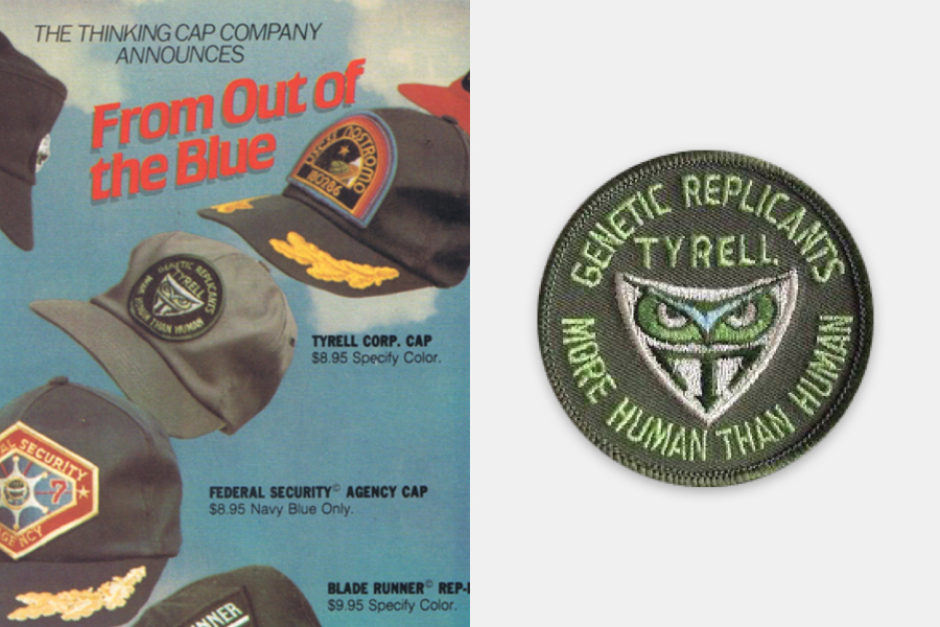
Figure 4.4 The logo as it appeared on an officially licensed patch, that was available on mail order caps, and also through the Blade Runner Fan Club. Source: Starlog Magazine